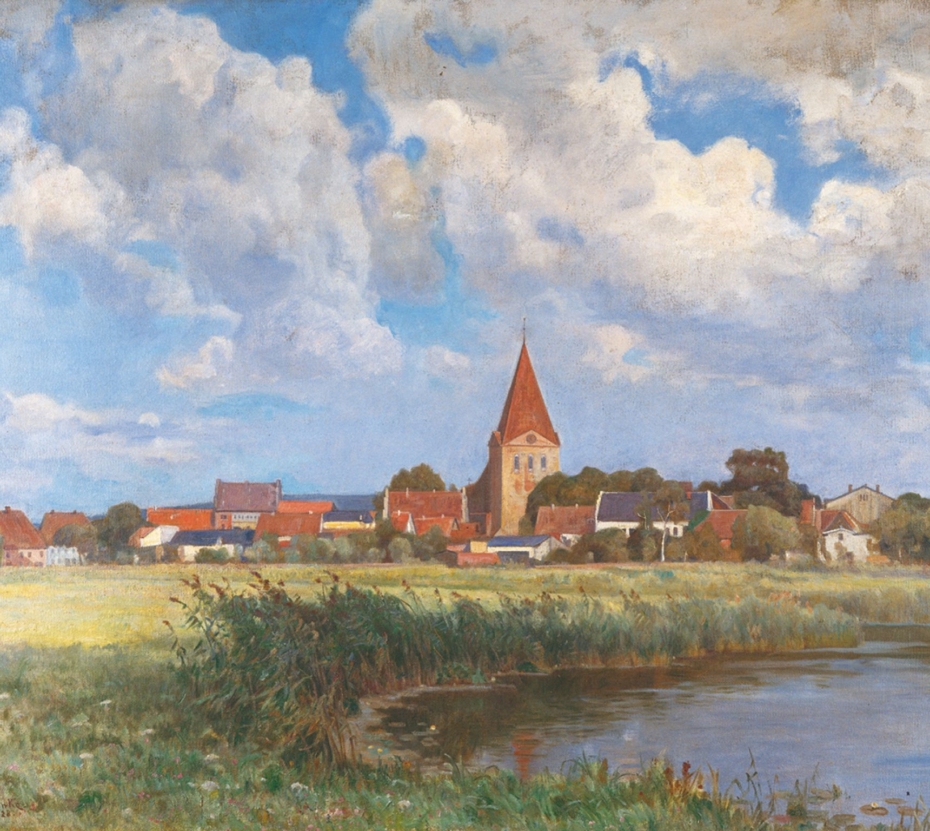The aim of the Impressionisms Routes in Europe project is to create and maintain within the continent a link between the sites that inspired European impressionist and pleinairist painters from the mid-19th century to the mid-20th century. century, the places where they lived, the places where they founded artist colonies and the cities which, in their museums or cultural spaces, present their works today. This set of sites constitutes a true “open-air museum” of the landscapes represented and allows visitors to be directly connected with the Impressionist movement.
Impressionism marks the end of one world and the beginning of another, exactly as in the scientific, political and economic fields during this period, because art expresses the multiple transformations of societies. This artistic movement did not only concern painters but also the intelligentsia of the time: musicians, writers, journalists, scientists Impressionism was conceived in France and experienced its main developments there, but it developed widely in Europe despite the difficult political context of the time, as shown in the work published under the aegis of Eau et Lumière in September 2016: “Impressionisms Routes – The Impressionism Routes in Europe”. All the artists participated in the important movement of ideas which crossed the continent after 1848, calling into question political borders, intellectual data and established powers. The cultural challenge of the “Impressionisms Routes” project is to also make these multiple aspects of Impressionism known.
The numerous meetings between these artists during workshops, stays or exhibitions or provoked by collectors and art dealers, facilitated the dissemination of new techniques created at the beginning of the 19th century by the English painters Turner and Constable who had modified the pictorial style before trends breaking with official art appeared among the Italian Macchiaioli or within the Barbizon school… Impressionism reflects a passionate attachment to light, to water in its various forms, to daily life… It expresses a joy of living exalted by its perfect harmony with nature and it is at the origin of subsequent pictorial revolutions.


Impressionism was born in a rapidly changing political and economic context in the 19th century at a time when the ideas of the Enlightenment and the French Revolution were spreading throughout Europe… with the emergence of national sentiments, the emancipation of peoples and the conquest of their freedom which led in particular to Italian and German units. The Routes of Impressionisms are part of this movement which intends to support a true European dynamic and promote a heritage that must be promoted and protected.
Impressionisms Routes works to bring together and bring to life a set of significant sites of Impressionist and landscape painting of the 19th and 20th centuries in Europe. This network brings together the places where painters lived, the sites which inspired them, the artistic colonies which they founded or in which they participated, the museums where their works are exhibited. The activities of this network aim to promote the universal character of Impressionism and the important role it plays in the knowledge and preservation of European heritage, as well as in the formation of European cultural identity.
If Impressionism is often perceived as an essentially French movement, in reality, both in its origins (Turner, Constable, Whistler, Jongkind, etc.) and in its later influence, it strongly irrigated the entire European continent through multiple exchanges between artists from many countries. The Impressionisms Routes network is deliberately oriented towards this strong and original idea: Impressionism in the broad sense can and must be considered European, it indeed perfectly conveys the values and heritage of our continent in the sense desired and promoted by the Council from Europe.
The book published in 2021 by Impressionisms Routes entitled: “The Impressionist Movement in Europe” written by Monique LUCENET, Associate Professor of History-Geography, Doctor of History (Université Paris-Panthéon Sorbonne) shows that at least 36 European countries participated on an Impressionist adventure on the continent. In 2022, this work won the Literary Prize for Cultural Routes from the Council of Europe.
Impressionisms Routes was officially certified as a “Cultural Route of the Council of Europe” in May 2018 and has therefore worked, since that date, in close liaison with the network of Cultural Routes of the Council of Europe which today includes 48 Routes bringing together more than 3000 sites in nearly 60 European countries.
The network is managed by the Institute of European Cultural Routes located in Luxembourg.
Les itinéraires culturels du conseil de l’Europe
Lancés par le Conseil de l’Europe en 1987, les itinéraires culturels européens démontrent, à travers le voyage dans le temps et l’espace, que le patrimoine des différents pays d’Europe contribue au patrimoine commun. Les itinéraires sont les réseaux locaux qui mettent en œuvre les valeurs fondamentales du Conseil de l’Europe : droits de l’homme, démocratie culturelle, diversité et identité culturelle, échanges et enrichissement mutuel par-delà les frontières et les siècles. Ils agissent comme des passerelles pour le dialogue interculturel et la promotion d’une meilleure connaissance et compréhension de l’histoire européenne.
Au 1er janvier 2019, les Itinéraires Culturels du Conseil de l’Europe sont au nombre de 33… Le premier d’entre eux sont les Chemins de Saint-Jacques-de-Compostelle, labellisés en 1987 ; les deux derniers sont les Routes des Impressionnismes (32ème) et la Via Charlemagne, certifiés en 2018. (site internet culture-routes.net)





